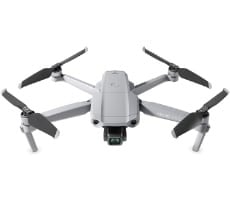Smartphones are increasingly becoming the way many people access the Internet. A smartphone needs to have a responsive web browser system to render complex pages fast, along with a reliable cell or Wi-Fi connection. We can’t easily, quantitatively state how well these radios perform in various phones, as the variables between carriers and access points are too difficult to lock down, but we
can investigate browser performance between devices.
For our first tests we're using the JetStream benchmark for
Javascript and RightWare’s Web Test 3.0 for comprehensive web performance analysis, including
HTML5 rendering. Here we'll primarily determining how the Qualcomm
Snapdragon 821's core CPU architecture handles this workload, along with the Zenfone AR's web browser software stack.
 |
|
JetStream and BrowserMark |
| JavaScript and Browser Testing |
|
Apple's browser and OS continue to dominate these tests, with the last iPhone we tested (iPhone 6s Plus) scoring 118.88 in Jetstream and 290.12 in Basemark. Neither are included in our graphs because they end up scrunching the rest of the benchmarks, but it is worth noting Apple still hold the pole position.
That said, we are seeing Android devices starting to make a run. In Jetstream, the ZenFone AR is midway on the upward curve that runs through the Huawei Mate 9 and Samsung's Galaxy S8 devices, and is about neck-and-nick with the Moto Z2 Force.
Performance falls a bit in Basemark with the ZenFone AR sitting eight spots down the stack, though it is a virtual tie for the half a dozen smartphones that come in behind the Galaxy S8 handsets.
 |
|
AnTuTu 6 |
|
Platform Benchmarks |
|
AnTuTu’s latest benchmark returns a number of metrics ranked with somewhat nebulous scores, rather than frame rates or time to complete. We tested with the latest version of AnTuTu across all platforms including Android, iOS and even Windows Phone. AnTuTu returns four top level performance metric results that we are including here: CPU, RAM, 3D, UX (or User Experience), along with a total score. Since this is an Android benchmark, we don't have Apple products to show in the mix here.
One thing that is interesting to note in Antutu is that the ZenFone AR posted the highest RAM score of the bunch. This suggests to us that capacity plays somewhat of a role in how this test determines its score, with our SKU sporting 8GB of LPDDR4 memory. It performed well in other areas too, taking fifth place behind a handful of flagship phones from the competition. Not too shabby considering the ZenFone AR's comparatively dated SoC (Snapdragon 821).
 |
|
Geekbench |
|
Synthetic CPU Testing |
|
In the GeekBench test, we're stressing only CPU cores in a handset (not graphics), with both single and multi-threaded workloads. The test comprised of encryption processing, image compression, HTML5 parsing, physics calculations and other general purpose compute processing.
The reality of a dated processor really hits in Geekbench. Though the ZenFone AR is packing an impressive 8GB of memory, it doesn't help it climb the ladder here, where the ZenFone AR and its Snapdragon 821 SoC fall to the lower half of contenders. This is a direct result of Qualcomm's newer chipsets running faster.
 |
|
Futuremark PCMark For Android |
|
General Purpose Pocket Computing Performance Metrics |
|
Futuremark's PCMark for Android is a new benchmark addition here for us, so we have fewer results in our database of tested phones to show you. However, this is an excellent suite of tests that we highly recommend for benchmarking performance of a handset with heavier-duty tasks for things like image and video editing, as well as lighter-duty workloads like email, and web browsing. When you see the test running live it's clear its scripted application tests are carefully selected and tuned to make use of the platforms involved in a very controlled way.

Here as well we see the ZenFone AR fall behind flagship phones with faster chipsets, while still managing to hold its own. The area it was most competitive in PCMark 8 was the Photo Editing portion of the benchmark. We attribute this to the amount and speed of system memory and not so much the processor, which struggles in the video editing portion (compared to the competition).
AnTuTu’s latest benchmark returns a number of metrics ranked with nebulous scores, rather than frame rates or time to complete. We tested with the latest version of AnTuTu across all platforms including Android, iOS and even Windows Phone. AnTuTu returns four top level performance metric results that we are including here: CPU, RAM, 3D, UX (or User Experience), along with a total score.












